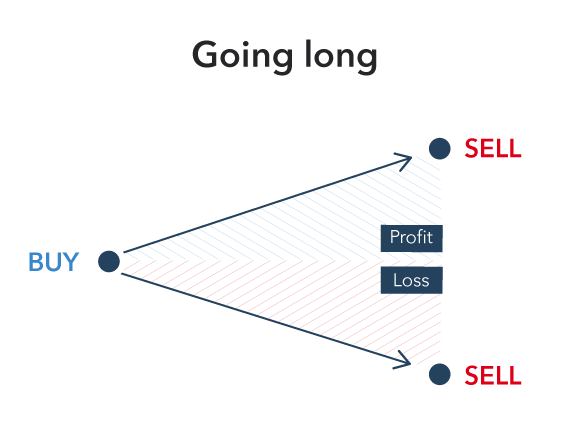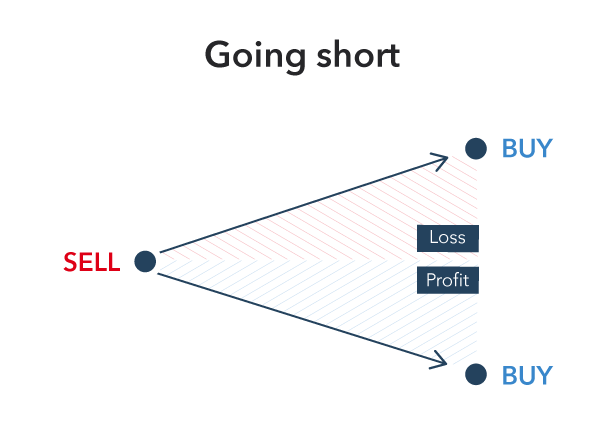Buying and selling in trading explained
When you place a trade, you are either ‘buying’ or ‘selling’ a financial instrument. There are buyers and sellers in every market. Here we discuss how their relationship works, and how it influences the markets.

What do ‘buy’ and ‘sell’ mean in trading?
When you open a ‘buy’ position, you are essentially buying an asset from the market. And when you close your position, you ‘sell’ it back to the market. Buyers – also known as bulls – believe an asset’s value is likely to rise. Sellers – or bears – generally think its value is set to fall.
When you open a position with a broker or trading provider, you’ll be presented with two prices. If you want to trade at the buy price, which is slightly above the market price, you open a ‘long’ position. If you want to trade at the sell price – slightly below the market price – you open a ‘short’ position. The difference between the buy and sell price is known as the ‘spread’, which the provider takes to facilitate the position.
What is a long position?
A long position in traditional trading is when you buy an asset in the expectation its price will rise, so you can sell it later for a profit. This is also referred to as going long or buying.
Making a long trade doesn’t necessarily mean buying a physical asset. Derivatives like CFDs and futures contracts give you the opportunity to take a long position on a market without owning underlying asset. You are simply speculating that the price of the asset will rise.

What is a short position?
A short position in trading is a strategy used to take advantage of markets that are falling in price. When you make a short trade, you are selling a borrowed asset in the hope that its price will go down, and you can buy it back later for a profit. It is also known as short-selling, shorting or going short.
Short-selling works by borrowing the underlying asset from a trading broker, and then immediately selling it at the current market price. Shorting is the opposite of going long – where you will make a profit if the price goes up.

Again, let’s say you want to trade bitcoin against the US dollar (bitcoin/USD). The current market price is 3919, and you decide to take a short position and sell 5 contracts (each equivalent to 1 BTC) to open a position at this price.
If you were right, and the value of bitcoin fell against the US dollar, your trade would profit. Let’s say that the new market price is 3874, you could close your position and take your profit by buying 5 contacts to close your position at the buy price of 3879, which is slightly higher than the market price due to the spread. Because the market has moved 40 points in your favour, the profit on your trade would be calculated as follows: 5 x 40 = $200. If the market moved against you by 40 points, you would have made a loss, calculated as 5 x -40 = -$200.
How to go long and short on markets
If you want to take a long or short position on a market, you can open a CFD trading account. CFD trading is the buying (going long) and selling (going short) of contracts for the difference in price of an asset, between the opening and closing of your position.
CFDs and are derivative products, because they enable you to speculate on financial markets such as shares, forex, indices and commodities without having to take ownership of the underlying assets. Both methods use leverage, which means you only have to put up a small margin (deposit) to gain exposure to the full value of the trade. This can magnify your potential profit, but also your potential loss.
How buyers and sellers affect the market
Buyers and sellers affect supply and demand – and therefore the price – of an asset. At any given time, one group tends to outweigh the other, and that’s the primary reason the price of a market fluctuates. When the buyers outweigh the sellers, demand for the market rises. As a result, the price of the asset rises. When it’s the other way around, supply increases and demand for the asset starts to drop – and the price falls. The way supply and demand affect markets is often referred to as volatility.
A buyer’s market is when buyers have the advantage over sellers. They can negotiate a better buying price for an asset because supply is far more than demand. A seller’s market is when there is limited supply of an asset and an overflow of buyers. In this case, the seller has the advantage.

Buying and selling in summary
We’ve summarised a few key points to remember on buying and selling below.
- When you place a trade, you are either ‘buying’ or ‘selling’ a financial instrument
- A long position in trading is when you buy an asset in the expectation its price will rise
- A short position in trading is when you sell an asset in the expectation its price will fall
- You can go long or short on a market by opening a CFD account
- When buyers outweigh sellers, demand increases, and price rises
- When sellers outweigh buyers, supply increases, and demand and price drop
The information on this page does not contain a record of our trading prices, or an offer of, or solicitation for, a transaction in any financial instrument. IG Bank S.A. accepts no responsibility for any use that may be made of these comments and for any consequences that result. No representation or warranty is given as to the accuracy or completeness of this information. Consequently any person acting on it does so entirely at their own risk. Any research provided does not have regard to the specific investment objectives, financial situation and needs of any specific person who may receive it and as such is considered to be a marketing communication. Although we are not specifically constrained from dealing ahead of our recommendations we do not seek to take advantage of them before they are provided to our clients. See full non-independent research disclaimer.

Discover how to trade the markets
Explore the range of markets you can trade – and learn how they work – with IG Academy's free ’introducing the financial markets’ course.

